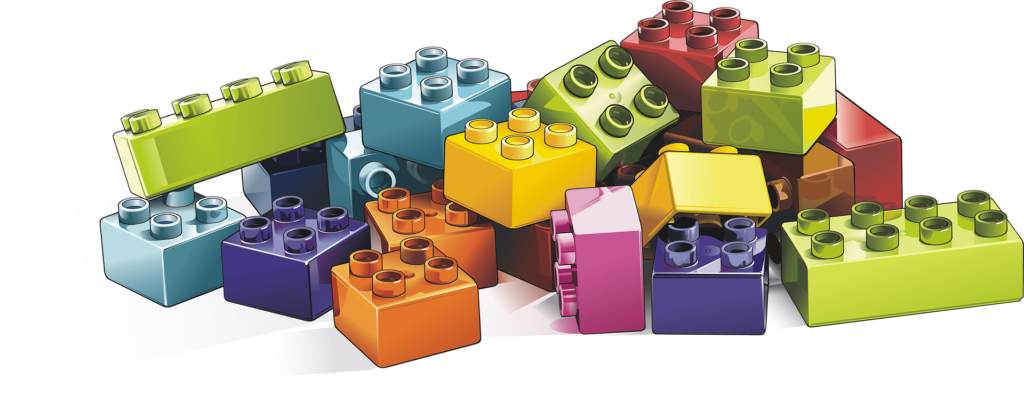Why is Lego pink?

The number of girls and young women pursuing many STEM subjects is lower than that of their male counterparts. It is the same in many developed countries but the UK has a particularly low representation of women in science-related careers. Industries and colleges have set up initiatives to attract women to STEM roles and some of these involve links with schools, both secondary and some primary, but many factors affect a child’s attitude towards science and engineering. This article considers some of these, including the impact of pink Lego.
From the 1980s to the modern day.
When I was studying for my A levels in the 1980s, my biology teacher took me and a small group of girls to an event designed to encourage girls to consider a career in engineering. I don’t remember who organised it, but I was interested in what I could do as an engineer and I did consider studying engineering at university. As it happens, I chose to do a degree in biochemistry. I have no idea whether any of the other girls became engineers: we lost touch a long time ago, but I do know that thirty years later there are still only a small percentage of girls opting to study engineering.
The proportion of women in engineering courses is extremely low – 15% of engineering graduates and 11% of the engineering workforce are women. (www.wes.org.uk)
My younger sister did go on to study civil engineering at university and is now a chartered civil engineer. She has been in the industry for over twenty years and despite various initiatives to draw girls towards a career in STEM subjects, she has had very few female colleagues in her working life.
I wonder why, after so many years of positive and active recruitment, there are so few female engineers. The CBI report: Engineering Our Future suggests that the percentage of girls studying STEM subjects begins to decline at A level. Gender difference in take up and achievement in core STEM subjects is now insignificant (www.jcq.org.uk), however, the number of girls taking A Level physics has not changed in the last 25 years and remains around 20%. (www.iop.org)
Whilst all students must take science and maths to GCSE, after this girls have a choice and few appear to be choosing to continue STEM subjects compared with their male peers. My youngest daughter, aged fourteen, is currently studying GCSE science, and tells me it is only because she has to do it. Now, with two teenage daughters who are less than enthusiastic about science and engineering, and six years teaching in a primary school, I have been considering what influences younger girls and what might still be reinforcing older gender stereotypes. Could childhood experiences before reaching school age, or experiences at primary school, be having a significant impact on children’s perceptions of what they like and don’t like? If these perceptions are introduced very early in life, do they become a reality that subsequent education cannot overcome?
Gender in my classroom.
I was a reception teacher in a primary school for four years. I believe that I encouraged girls and boys to try new activities, irrespective of their gender. However, I noticed that the ‘role play area’ in the classroom was predominantly occupied by girls when it was either a house or a shop, but was predominantly occupied by boys when it was presented as a garage or a workshop. Only a few times did I see a balance of girls and boys in this area: with an underwater scene, a stable representing the Nativity, or a beach. The children’s use of construction toys in the classroom was similarly related to the children’s gender: Lego attracted most boys, but very few girls.
I tried teacher-guided sessions using Lego for girls to encourage their creativity and develop their confidence: for example, who can build the tallest tower? And of course, I had similar sessions in role play for the boys. Despite this, I didn’t see any real change in the number of girls who would independently initiate building with Lego or similar construction toys. That is, until I bought a set of Lego roof tiles and windows, which I added to our class box of basic bricks. Almost overnight, the girls wanted to use Lego and build houses for the little plastic figures to ‘live’ in. The boys also used the tiles and windows but usually as features such as fins or windscreens on their aeroplanes and vehicles. It certainly seemed as though there was a gender difference at 4 years old.
The launch of pink Lego
Around the same time that I was teaching reception children, boxes of pink Lego bricks were available to attract girls. In 2012 Lego launched a new range of pink and pastel coloured bricks based around five female characters in a bid to appeal to girls aged 6-12, because traditionally around 80 percent of Lego sales had been to boys. The new “girls’ Lego” received a mixed reaction; the company’s marketing director argued that they were providing toys that girls were are asking for, just as I had in my classroom, whilst others claimed that this was a terrible step to take.
I remember feeling very frustrated when my own two daughters were at primary school: it was difficult to buy clothes that weren’t purple or pink. When I bought their first box of Lego I wanted a box of primary colour bricks like the box I had as a child, not just pink bricks, because I didn’t want my daughters to think that girls’ construction toys were in any way different to boys’ construction toys.
In 2016 I compared some of the Duplo boxes clearly aimed towards different genders. A Duplo ‘All-in-one-box-of-fun’ contains 65 basic bricks in different sizes and bright colours (no pink) and includes a buildable wagon base with wheels that really turn and a boy figure. In contrast, a similar pink Duplo set contains 65 bricks in pink and pastel shades, a girl figure, but no wheels. I do wonder what messages toddlers get when girls are offered pink products with pictures of static houses on the box, whilst their male friends have arguably more interesting pieces and can learn about forces and friction when they build vehicles using their wheels.
In 2018 there does seem to be a wider range of colours available in the 2-5 age range but in the ‘Favourite Character Developmental Toys’ range, seven of the twenty sets produced are still pink.
Gender neutral construction.
Of course, to encourage and develop children’s imaginations and fine motor control, there are many other construction toys on the market that have been around for years. Brightly coloured Stickle Bricks with wheel and axle components with no gender bias are great at home or in the classroom and other similar brands are available. Another long established construction toy is Meccano. From age 5+, children can have fun discovering elements of real engineering and these tend to be in primary colours.
What is not clear, however, is whether these gender-neutral toys appeal equally to boys and girls. So many toys are marketed to target boys and girls before they reach the stage where construction toys are suitable that perhaps the die has already been cast.
Personally, I’m really pleased that the pink Lego boxes have been ‘retired’. I was also really pleased to find the Lego Classic box, a collection of LEGO® bricks in 35 different colours including pink bricks, windows, eyes, and lots and lots of wheels that will encourage open-ended androgynous building play, and inspire any child’s imagination. So, if you do already own some pink Lego, why not tip it into a box of primary coloured bricks, add wheels and let your children explore without boundaries. Let’s give girls and boys equal opportunities from the start of their lives. If you don’t have any Lego to hand then you can try the Monster Physics app, children can use different materials and techniques to build cars, planes, rockets and all sorts of other vehicles! Girls may still not choose to become engineers as adults but, to have a real informed choice about their future careers, surely they should have the same access to resources and experiences that the boys do from the beginning.
Back to blog



 QUICK
QUICK
 MEDIUM
MEDIUM LONG
LONG



